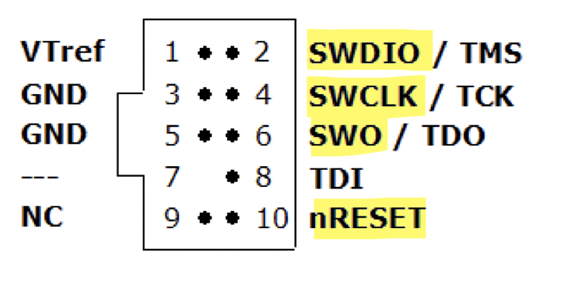I have a custom PCB with the Fanstel BC832 module. I don't have the inductors for DCDC converter added to my board. I had my entire project written and working with PlatformIO, and everything had been working perfectly, except for the power consumption -- working with PlatformIO had my power consumption plateau at about 8 mA which was unacceptable for my application. So then, we adapted our code using Zephyr and the nRF Connect SDK (v17.1.0) using Visual Studio Code. We got the code working perfectly on both the nRF52DK and the Fanstel nRF52832 EB, with no issues ever, and our current was down to about 2 mA. However, when flashing the code onto our custom PCB's, we've had a few random modules become absolutely bricked, to the point where they're not detected with the J-Link interface anymore (pinout of my connector, which matches that of the DK, is shown in the attached picture -- all the yellow highlighted, plus VTref and GND are included. Module is powered independently during flashing). The device is not recognized as a Nordic device anymore using nRF Desktop either. The only workaround we've had is to unsolder the BC832 module and start over with a fresh one.
Yesterday, after losing two modules in a row, we checked our prjoject configuration file, and noticed that the DCDC converters had been turned on for some reason. We didn't do this ourselves, but suspect they got turned on when we changed the device name and the whole project got rebuilt. This is our biggest suspect for the failure, but we're very unsure if this would cause the modules to be bricked. My questions are:
1. Is this (having had DCDC converter on) a likely explanation for what happened?
2. Is there a way to recover the bricked modules?
Thanks in advance for all your help! The modules I lost were in PCB's that were already potted, and the assembly was a very time-consuming process. I'm hoping I can fix them, or at least make sure it never happens again.
PS. I've seen other reports of similar behaviors happening, but I haven't been able to find a resolution. One such example is this case.



